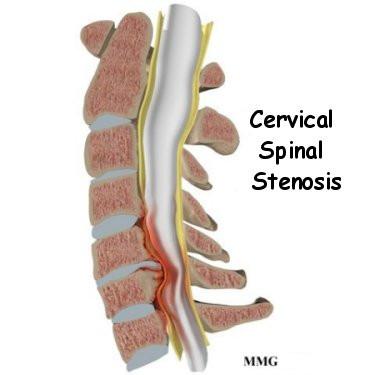Cervical Spinal Stenosis

Overview
Cervical spinal stenosis is a health condition characterized by the narrowing of the spinal canal in the neck region. This can lead to a compression of the spinal cord and nerves, potentially causing pain, numbness, or even paralysis. It is a prevalent condition, particularly in the elderly population, as it is often associated with the natural aging process.
Types
Cervical spinal stenosis is broadly classified into two types: Congenital spinal stenosis and Acquired spinal stenosis.
1. Congenital Spinal Stenosis: As the name suggests, this is a condition present from birth. Congenital spinal stenosis occurs due to the uniquely smaller size of the individual’s spinal canal.
2. Acquired Spinal Stenosis: This type is more common and is mostly seen in older adults. It occurs as a result of changes in the tissues of the spinal canal due to wear and tear or disease.
Causes
The main causes of cervical spinal stenosis are:
– Aging, which can lead to degenerative changes like the growth of bone spurs, thickened ligaments, and herniated discs.
– Arthritis, primarily osteoarthritis, which can lead to damage and degeneration of the spine.
– Injuries to the spine.
– Congenital factors, where an individual’s spinal canal is smaller from birth.
Symptoms
The symptoms of cervical spinal stenosis can vary greatly from one individual to another. Common symptoms include:
- Neck pain and stiffness
– Numbness or weakness in the arms, hands, or legs
– Difficulty in balance or walking
– Problems with bowel or bladder control in severe cases
Less common signs can include headaches, or loss of motor function leading to paralysis in worst-case scenarios.
Diagnosis
Cervical spinal stenosis is typically diagnosed through a combination of physical examinations and medical imaging tests. These can include:
– MRI scans: To view the spinal cord and nerves.
– CT scans: To get detailed images of the bones in the spine.
– X-rays: To view the overall structure of the spine.
– In certain cases, electromyography (EMG) might also be performed to evaluate the health of the muscles and nerve cells controlling them.
Treatment Options
Treatment for cervical spinal stenosis can be non-surgical or surgical, depending on the severity of the condition.
1. Non-surgical treatments: These aim to alleviate symptoms and include physical therapy, pain medications, exercises, and use of aids such as neck collars or braces.
2. Surgical treatments: If non-surgical treatments fail to provide relief, or if the condition is severe, surgery options like decompression surgery or spinal fusion may be considered.
Living With Cervical Spinal Stenosis
Living with cervical spinal stenosis requires adjustments, but with adequate measures, one can manage the condition effectively:
– Regular exercises and physical therapy can help improve flexibility and reduce pain.
– Over-the-counter drugs or prescribed medications are essential for managing pain.
– Good posture is vital to reduce strain on the spine.
– Maintaining a healthy weight reduces pressure on the spine.
When to Seek Help
Immediate medical attention should be sought for cervical spinal stenosis if:
– Pain or numbness is severe and persistent.
– Symptoms worsen despite treatment.
– There’s a significant loss in motor function, dexterity or balance.
– There’s a loss of bladder or bowel control.
Cervical spinal stenosis could be challenging to live with, but with proper measures and treatment, it can be managed effectively. Regular check-ups with your healthcare provider and adherence to prescribed treatment plans are key to maintaining a good quality of life.
